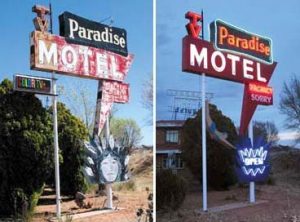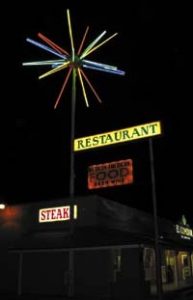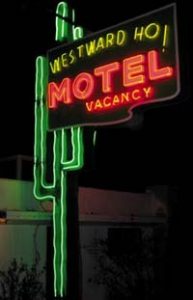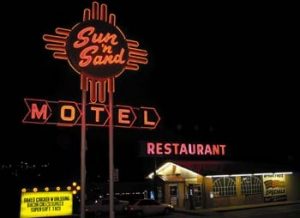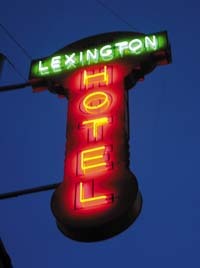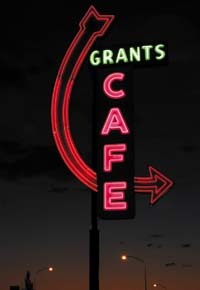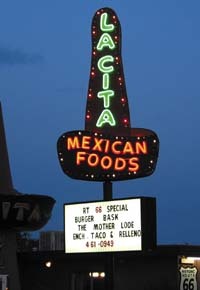During the heyday of Route 66, when the legendary road stretched across eight states and served as the artery from Chicago to Los Angeles, fantastic neon signs peppered the route and announced everything from a roadside motel to a filling station to a diner. When the route was outpaced by the more efficient Interstate highways, beginning in the 1970s, many signs — and businesses — burned out.
However, some businesses survived, and Route 66 continued to lure tourists eager to explore the Mother Road’s historic cultural landscape. Dedicated citizens and organizations worked to preserve Route 66 history, and, in 1999, Congress earmarked up to $1 million annually in preservation funds for the route for the next 10 years.
In 2000, former New Mexico State Historic Preservation Officer Elmo Baca proposed restoring some of New Mexico’s vintage neon. The newly formed Route 66 Corridor Preservation Office, which was created to disperse the federal funds, agreed. Subsequently, the nonprofit New Mexico Route 66 Assn., and its president, Johnnie V. Meier, were authorized to manage the restoration of neon signs along the state’s section of the famous byway.
Repairing history
The retired Meier, whose career focus had been science — not neon signs — recognized that he would need experts to determine which of the fabulous, but failing, neon signs to restore. His panel of experts included: David Kammer, a well-known New Mexico historian who has published studies on historic Route 66 properties; Steve Fitch, a neon tubebender, contributor to the book Vintage Neon and author of several others, including one on roadside culture; Don Usner, a published author who recently wrote New Mexico Route 66 on Tour — The Legendary Architecture from Glenrio to Gallup; and Michael Wallis, a Pulitzer Prize-nominated author, speaker and champion for Route 66 and roadside culture.
Once the potential signs were selected for restoration, the bidding process began. Originally given funding to restore five signs, Meier stretched the funds to restore nine signs via "creative financial management." For example, Meier volunteered to serve as project manager and thus eliminate a management fee. As part of the cost-share grant — which covered approximately half the project — each business owner was responsible for raising a portion of the funds.
Built during the route’s heyday, the neon creations, each a recognizable fixture, range from the early 1930s to the mid-1960s. The signs are immortalized in vintage postcards, tourists’ photo albums, guidebooks and Route 66 literature. Each sign stands outside of an operating business and rates as a landmark.
"We wanted to enhance the economic vitality of the businesses by restoring their beautiful signs," Meier said.
Many signs were badly deteriorated and, in some cases, lacked functioning neon, but locals and tourists still revered them. Meier said he wanted the grant to breathe life back into these beloved signs and, by osmosis, add a spark to Route 66.
The restoration
The sign companies that restored the nine signs made little money on the project, Meier said. The process became more about preservation.
"It’s really a labor of love," said Eric Averill from SignArt of New Mexico (Albuquerque), which restored the Grants Caf
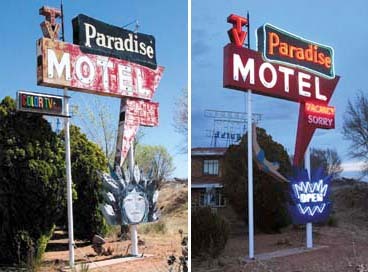


 Tip Sheet3 days ago
Tip Sheet3 days ago
 Business Management1 week ago
Business Management1 week ago
 Women in Signs2 weeks ago
Women in Signs2 weeks ago
 Real Deal4 days ago
Real Deal4 days ago
 Editor's Note1 week ago
Editor's Note1 week ago
 Maggie Harlow2 weeks ago
Maggie Harlow2 weeks ago
 Line Time2 weeks ago
Line Time2 weeks ago
 Product Buying + Technology1 week ago
Product Buying + Technology1 week ago